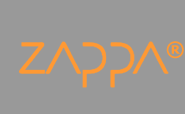»It is an universal and essential principle of our work not to plan any activities in advance. Only in that way it is possible to have direct and spontaneous communication with each other, uninterrupted by instructions screening off a real relationship«
(Aucouturier, Lapierre,1998, p.96).
»We consider the inter-individual relationship, the relationship from one person to another, as a fundamental principle of our work.«
(Aucouturier, Lapierre, 1998, p.29)
Aucouturier's psychomotricity
Bernard Aucouturier's background was in teaching physical education. His interest in psychomotoric practice started when he became the head of »Centre d'Education Physique Specialisee' in the sixties. This was the time when the first psychomototric concepts were developed by Jean Le Boulch and Pierre Vayer, which were applied and tried out in nurseries and primary schools. Their common thought was that by developing motor skills such as movement co-ordination, an image of your own body, awareness of time and space etc. the development of cognitive skills could be supported. Aucouturier worked on this basis with children who were referred to his centre because of emotional and behavioural problems, motor difficulties, disabilities and learning difficulties etc.
»At the beginning of our work we believed in the psychomotoric concepts of »deficits of the child« ( catching up on »missed stages« of the child's psychomotoric development ), developed by Le Boulch and Vayer. This concept was mainly normative and rationalistic. Normative in a sense that the child's psychomotoric development was evaluated according to statistical norms … After a certain amount of »deficits« have been located and identified, these deficits are tackled consequently through motoric exercises…« (Aucouturier, Lapierre, 1998, p.18)
In his first book »Les contrastes et la decouverte des notions fondamentals« ( Aucouturier, Lapierre, 1974), Aucouturier presented psychomotoric exercises, through which the child gets in contact with abstract concepts such as size, speed, direction, intensity etc.. He soon recognised the difficulties of the conception of this first psychomotoric intervention. While observing the children doing their exercises, he often felt their resistance, passivity, boredom and lack of interest. He realised that the children consciously or unconsciously felt that these exercises have a second intention - for example to improve learning skills ( eye-hand co-ordination for writing, space-time organisation for reading, maths, etc.).
»These secondary aims of school related learning remain present, and the chance for more openness and flexibility is quickly destroyed by traditional pedagogy. The psychomotoric exercises only seemed to be an important part of nursery education if they were controlled by pedagogy. From this moment on systematic learning of a second degree took place again, which is imposed by the teacher with the same frightening pressure« (Aucouturier, Lapierre, 1998, p.18).
